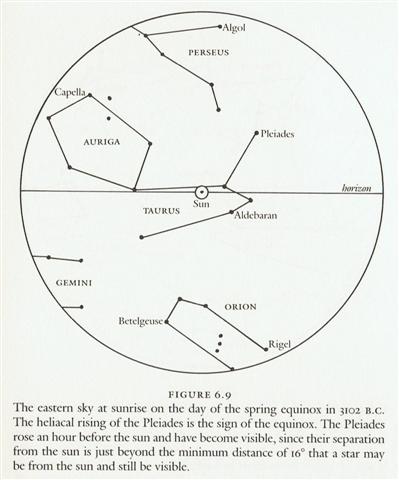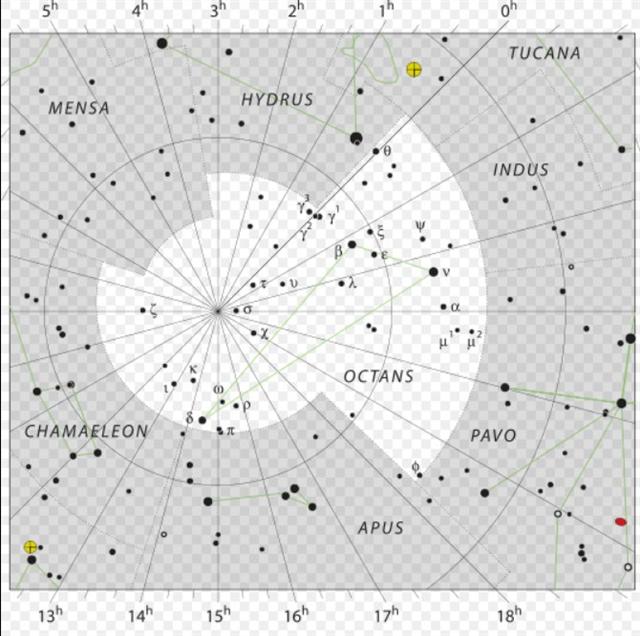Our discovered rule of thumb - drawn out from under the cloth of ignorance - viz. to reconstruct the dates according to the epoch of the Golden Age of the Bull by estimating them from the right ascension dates at the time of rongorongo + 16 days (an addition in order to wait for the return to visibility of the star in question); ... The Sothic cycle was based on what is referred to in technical jargon as 'the periodic return of the heliacal rising of Sirius', which is the first appearance of this star after a seasonal absence, rising at dawn just ahead of the sun in the eastern portion of the sky. In the case of Sirius the interval between one such rising and the next amounts to exactly 365.25 days - a mathematically harmonious figure, uncomplicated by further decimal points, which is just twelve minutes longer than the duration of the solar year ... In ancient Egypt they thought Sirius was behind the yearly rise of the Nile ... the seasonal cycle, throughout the ancient world, was the foremost sign of rebirth following death, and in Egypt the chronometer of this cycle was the annual flooding of the Nile ...
as for instance (December 2, *256, Cujam) + 16 = 272 (SEPTEMBER 29) = 336 - 64;
should motivate us to look ahead from December 2 (336) to day 272 (SEPTEMBER 29) + 64 = 336 (DECEMBER 2):
This position had been chosen as the place for the South Polar star (Dramasa, σ Octantis);
as indicated by the tiny dot at the bottom of the Brazilian flag:
We can therefore guess the destination of Hamlet's Mill: ... As Cardea she ruled over the Celestial Hinge at the back of the North Wind around which, as Varro explains in his De Re Rustica, the mill-stone of the Universe revolves. This conception appears most plainly in the Norse Edda, where the giantesses Fenja and Menja, who turn the monstrous mill-stone Grotte in the cold polar night, stand for the White Goddess in her complementary moods of creation and destruction. Elsewhere in Norse mythology the Goddess is nine-fold: the nine giantesses who were joint-mothers of the hero Rig, alias Heimdall, the inventor of the Norse social system, similarly turned the cosmic mill ... ... Another name for the Goddess of the Mill was Artemis Calliste, or Callisto ('Most Beautiful'), to whom the she-bear was sacred in Arcadia; and in Athens at the festival of Artemis Brauronia, a girl of ten years old and a girl of five, dressed in saffron-yellow robes in honour of the moon, played the part of sacred bears. The Great She-bear and Little She-bear are still the names of the two constellations that turn the mill around. In Greek the Great Bear Callisto was also called Helice, which means both 'that which turns' and 'willow-branch' - a reminder that the willow was sacred to the same Goddess ... ... Snorri Sterluson explains why 'Frodi's grist' is a kenning for gold. Frodi ruled during a peaceful and productive period, contemporaneous with Augustus's Pax Romana and the birth of Christ; hence the kenning. There were neither thieves nor robbers during this period, 'so that a gold ring lay long on Jalang's heath'. Snorri continues his account with the legend of the mill beyond what is told in the song: The girls' grinding produced an army hostile to Frodi. On the very day of the girls' predictions, the sea-king, Musing (Son of the Mouse), landed on the Danish shore, killed Frodi, and took away Grotti and the women on his ship. The girls were bidden to grind out salt on the mill. At midnight they asked for further instructions. 'Keep grinding', he told them. Then they ground with such vigor that the ship sank. Water poured into the eye of the mill, creating the maelstroem of the sea. Therefore the sea was salt. Incidentally, the mill was given a kenning, Serpent's Couch ...
|
|||||||||||||||||||||||||||||||||||||||||||||||




